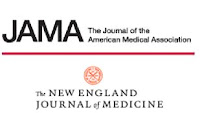A recent article* about how to reduce diagnostic errors in healthcare caught our attention, for a couple of reasons. First, it describes a fairly comprehensive checklist of specific practices to address diagnostic errors, and second, the practices include organizational culture and reflect systems thinking, both subjects dear to us. The checklist’s purpose is to help an organization rate its current performance and identify areas for improvement.
The authors used a reasonable method to develop the checklist: they convened an anonymous Delphi group, identified and ranked initial lists of practices, shared the information among the group, then collected and organized the updated rankings. The authors then sent the draft checklist to several hospital managers, i.e., the kind of people who would have to implement the approach, for their input on feasibility and clarity. The final checklist was then published.
The checklist focuses on diagnostic errors, i.e., missed, delayed, or wrong diagnoses. It does not address other major types of healthcare errors, e.g., botched procedures, drug mix-ups, or provider hygiene practices.
The authors propose 10 practices, summarized below, to assess current performance and direct interventions with respect to diagnostic errors:
1. Senior leadership builds a “board-to-bedside” accountability framework to measure and improve diagnostic safety.
2. Promote a just culture and create a psychologically safe environment that encourages clinicians and staff to share opportunities to improve diagnostic safety without fear of retribution.
3. Create feedback loops to increase information flow about patients’ diagnostic and treatment-related outcomes after handoffs from one provider/department to another.
4. Develop multidisciplinary perspectives to understand and address contributory factors in the analysis of diagnostic safety events.
5. Seek patient and family feedback to identify and understand diagnostic safety concerns.
6. Encourage patients to review their health records and ask questions about their diagnoses and related treatments.
7. Prioritize equity in diagnostic safety efforts.
8-10. Establish standardized systems and processes to (1) encourage direct, collaborative interactions between treating clinical teams and diagnostic specialties; (2) ensure reliable communication of diagnostic information between care providers and with patients and families; and (3) close the loop on communication and follow up on abnormal test results and referrals.
Our Perspective
We support the authors recognition that diagnostic errors are difficult to analyze; they can involve clinical uncertainty, the natural evolution of diagnosis as more information becomes available, and cognitive errors, all exacerbated by system vulnerabilities. Addressing such errors requires a systems approach.
The emphasis on a just culture and establishing feedback loops is good. We would add the importance of management commitment to fixing and learning from identified problems, and a management compensation plan that includes monetary incentives for doing this.
However, we believe the probability of a healthcare organization establishing dedicated infrastructure to address diagnostic errors is very low. First, the authors recognize there is no existing business case to address such errors. In addition, we suspect there is some uncertainty around how often such errors occur. The authors say these errors affect at least 5% of US adult outpatients annually but that number is based on a single mini-meta study.**
As a consequence, senior management is not currently motivated by either fear (e.g., higher costs, excessive losses to lawsuits, regulatory sanctions or fines, or reputational loss) or greed (e.g., professional recognition or monetary incentives) to take action. So our recommended first step should be to determine which types of medical errors present the greatest threats to an institution, how many occur, and then determine what can be done to prevent them or minimize their consequences. (See our July 31, 2020 post on Dr. Danielle Ofri’s book When We Do Harm for more on medical errors.)
Second, the organization has other competing goals demanding attention and resources so management’s inclination will be to minimize costs by simply extending any existing error identification and resolution program to include diagnostic errors.
Third, diagnosis is not a cut-and-dried process, like inserting a catheter, double-checking patients’ names, or hand washing. The diagnostic process is essentially probabilistic, with different diagnoses possible from the same data, and to some degree, subjective. Management probably does not want a stand-alone system that second guesses and retrospectively judges doctors’ decisions and opinions. Such an approach could be perceived as intruding on doctors’ freedom to exercise professional judgment and is bad for morale.
Bottom line: The checklist is well-intentioned but a bit naïve. It is a good guide for identifying weak spots and hazards in a healthcare organization, and the overall approach is not necessarily limited to diagnostic errors.
* Singh, H., Mushtaq, U., Marinez, A., Shahid, U., Huebner, J., McGaffigan, P., and Upadhyay, D.K., “Developing the Safer Dx Checklist of Ten Safety Recommendations for Health Care Organizations to Address Diagnostic Errors,” The Joint Commission Journal on Quality and Patient Safety, No. 48, Aug. 10, 2022, pp. 581–590. The Joint Commission is an entity that inspects and accredits healthcare providers, mainly hospitals.
** Singh, H., Meyer, A.N.D., and Thomas, E.J., “The frequency of diagnostic errors in outpatient care: estimations from three large observational studies involving US adult populations,” BMJ Quality and Safety, Vol. 23, No. 9, April 2014, pp. 727–731.





